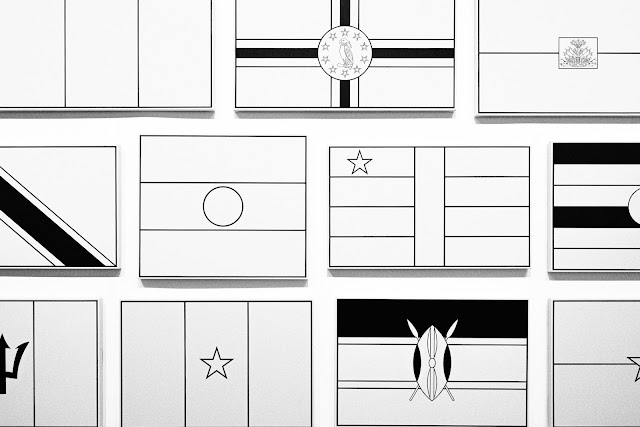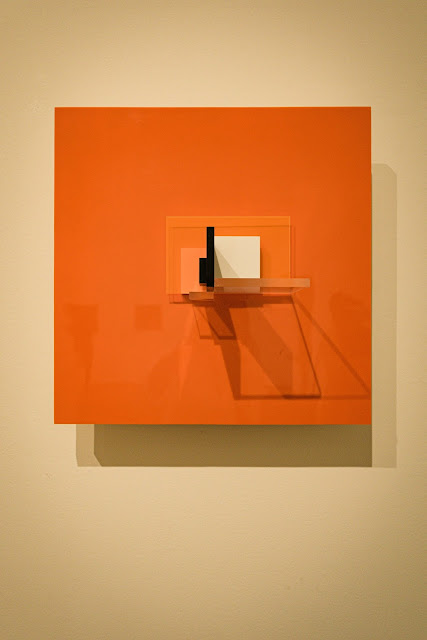Poet and artist Cecilia Vicuña calls Quipu Womb a ‘poem in space.’ Over fifty large strands of unspun wool, dyed red, flow down from a metal ring high above our heads. Each cord has different knots spaced rhythmically along its length. The work references menstrual blood as well as the energies, flows and cycles of nature.
Doris Salcedo Untitled 1987
Art that reflects on the violence and displacement caused by colonialism, discrimination, poverty and war.
The Materials and Objects display looks at the inventive ways in which artists around the world use diverse materials.
Increasingly over the last hundred years, artists have challenged the idea that certain materials are unsuitable for art. Some employ industrial materials and methods, while others adapt craft skills, or put the throwaway products of consumer society to new uses.
Haegue YangSol LeWitt Upside Down – Structure with Three Towers, Expanded 23 Times, Split in Three2015Sarah Sze combines familiar objects to create a fantastical sculpture
Seamless 1999 incorporates functional, human-scale items, for example a ladder. Other handmade elements, such as tiny bridges made from matchsticks, use a scale that relates to fictional miniature worlds. Spiralling structures also suggest the microscopic scale of molecular science. They resemble the double helix shape of DNA, molecules that determine the growth and reproduction of all living things.
YinXiuzhenWeapon2003–7 ©️2019 YinXiuzhenPhotographer: Song Dong.
Weapon 2003-7 consists of a series of sculptures suspended from the ceiling. Hanging lengthways, they resemble missiles. The addition of small fruit knives emphasises an element of threat.
The shape of the objects was inspired by the Beijing Central Radio and Television Tower. Dominating the city’s skyline, the tower shows the importance of China’s broadcast media. For Yin, it represents the nation’s ‘soft power’. This is the exertion of control through economic and cultural means rather than the ‘hard power’ of military force.
Cildo Meireles, Babel 2001
Babel 2001 is a large-scale sculptural installation that takes the form of a circular tower made from hundreds of second-hand analogue radios that the artist has stacked in layers. The radios are tuned to a multitude of different stations and are adjusted to the minimum volume at which they are audible. Nevertheless, they compete with each other and create a cacophony of low, continuous sound, resulting in inaccessible information, voices or music.
Edward Krasiński used tonal colour, lighting, photography and reflective surfaces to challenge the fixed nature of sculpture.
The installation displayed here consists of 12 suspended mirrors of equal size. A continuous line of blue tape runs along the walls and the surface of each mirror. The tape is applied at a fixed height of 130cm. It integrates the mirrors with their surroundings, erasing the difference
between real and reflected space. The rows of overlapping mirrors generate a sense of movement in which the space seems to recede and advance, depending on the viewpoint of the spectator, who is also reflected in the work.
Joseph BeuysThe End of the Twentieth Century 1983–5
Blocks of basalt are arranged across the floor. Basalt is volcanic in origin, and Beuys associated it with the earth’s ancient energy and geological time. Beuys cut a conical hole in each of the slabs. He then ‘treated’ this ‘wound’ by lining the hollow with insulating clay and felt, before re-inserting the stone plugs. These filled cavities imply the potential for healing, suggesting the possibility of renewal at the end of a violent and destructive century.





































No comments:
Post a Comment